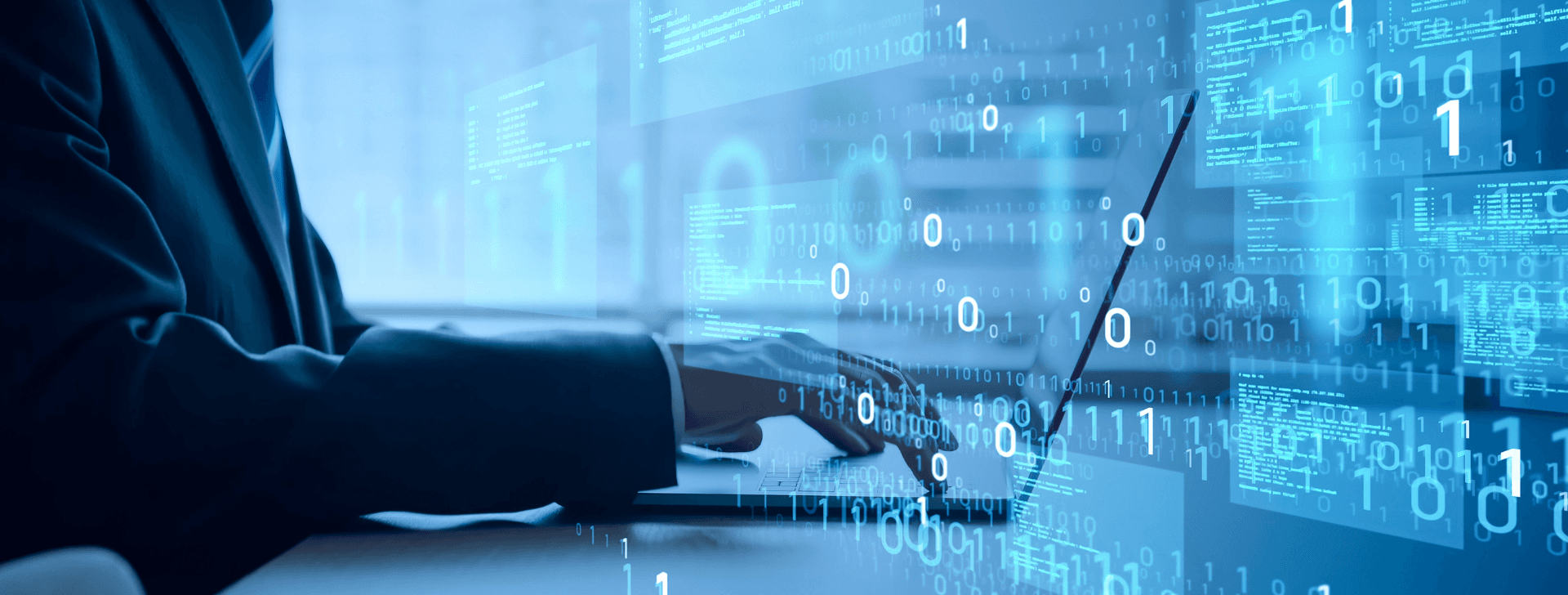

Data science vs. data analytics
NOV. 23, 2024
6 Min Read
Data science and data analytics play pivotal roles in turning raw data into actionable insights.
As organizations trust data to drive decisions, these disciplines have become essential. While they share overlapping purposes, their methodologies, tools, and outcomes are distinct.
What is data science?
Data science is a multidisciplinary field that combines programming, statistics, and domain expertise to extract meaningful patterns from large datasets. Its applications often involve predictive modeling, machine learning, and algorithm development. By focusing on identifying unknown trends, data science provides organizations with strategies for future growth.
What is data analytics?
Data analytics focuses on examining datasets to find patterns, trends, and relationships. Its goal is to provide actionable insights for immediate business decisions. Unlike data science, which tends to explore unstructured problems, data analytics is rooted in structured problem-solving, relying on statistical tools and visualization techniques to interpret results.
These definitions underline the complementary nature of data science and data analytics, each addressing different stages of the data journey. Together, they enable organizations to identify trends, make informed decisions, and strategically position themselves for success.
Key takeaways
- 1. Data science focuses on predictive and exploratory approaches, while data analytics prioritizes actionable insights from structured data.
- 2. Data science methodologies, including the data lifecycle, enable systematic problem-solving from collection to deployment.
- 3. Big data analytics tackles large-scale datasets to uncover trends and support operational decisions in real time.
- 4. Ethical considerations in data handling, such as privacy and bias mitigation, are essential for building trust in data-driven systems.
- 5. Future trends, including AI-driven automation and augmented analytics, are shaping how organizations leverage data for strategic success.
Core differences between data science and data analytics

Understanding the differences between data science and data analytics is essential to leveraging their unique capabilities effectively. While both disciplines are backed by data, they serve distinct purposes, rely on different tools, and approach problem-solving in unique ways.
Comparing data science and data analytics
| Aspect | Data science | Data analytics |
|---|---|---|
| Purpose | Focuses on discovering new insights and predicting future trends. | Concentrates on analyzing current data for actionable insights. |
| Data type | Often works with unstructured, semi-structured, and structured data. | Primarily deals with structured data. |
| Techniques | Employs advanced algorithms, machine learning, and AI. | Utilizes statistical analysis and descriptive tools. |
| Outcome | Provides long-term strategic recommendations. | Delivers immediate, operational recommendations. |
| Skillset | Requires programming, machine learning expertise, and domain knowledge. | Involves proficiency in visualization tools, statistics, and SQL. |
| Tools | R, Python, TensorFlow, Hadoop, and cloud-based AI platforms. | Tableau, Excel, Power BI, and SAS. |
| Typical applications | Predictive analytics, automation, recommendation engines, and innovation. | Business intelligence, operational efficiency, and performance tracking. |
| Focus area | Exploratory and experimental. | Descriptive and diagnostic. |
While their differences are evident, data science and data analytics are not mutually exclusive. Together, they provide a robust framework for turning data into a strategic asset. Organizations can benefit from integrating both fields to achieve a comprehensive understanding of their data landscape.
Types of data science
Data science encompasses various subfields, each addressing unique challenges and use cases. Understanding these types allows organizations to deploy the right methodologies for their specific needs.
- Predictive data science: Focuses on forecasting future outcomes based on historical data. By using techniques such as machine learning, predictive data science identifies trends and predicts events, helping businesses anticipate demand, manage risk, and optimize operations.
- Descriptive data science: Summarizes historical data to provide a clear understanding of past performance. Often used in reporting, this approach helps stakeholders make sense of large datasets, offering actionable insights into what has already happened.
- Prescriptive data science: Suggests actionable steps to achieve desired outcomes. Using simulations and optimization algorithms, it helps organizations make decisions that align with strategic goals.
- Exploratory data science: Highly investigative, aimed at defining patterns and relationships within data that were previously unknown. It’s instrumental in hypothesis generation and identifying opportunities for innovation.
- Cognitive data science: Focused on mimicking human intelligence, cognitive data science employs artificial intelligence and natural language processing to power chatbots, recommendation systems, and advanced automation tools.
Each type of data science contributes uniquely to solving complex business challenges. Together, they form the foundation for advanced innovation.
"Data science is a multidisciplinary field that combines programming, statistics, and domain expertise to extract meaningful patterns from large datasets."
Types of data analytics
Data analytics provides structured approaches to extract actionable insights, with each type addressing specific objectives and challenges. These categories illustrate how organizations can leverage analytics to solve targeted problems and enhance decision accuracy.
- Behavioral analytics: Focuses on tracking and interpreting user actions, such as click paths or app interactions. Businesses use it to refine user experiences, optimize conversion rates, and improve engagement strategies.
- Cohort analysis: Groups data into segments based on shared traits or timelines, enabling businesses to identify trends and patterns within specific groups. For example, analyzing retention rates by customer sign-up month reveals opportunities for targeted interventions.
- Revenue analytics: Concentrates on linking financial performance to business strategies, helping organizations identify profitable activities and optimize pricing models. It is often used to calculate customer lifetime value or assess product profitability.
- Operational analytics: Analyzes internal processes to improve efficiency and productivity. Manufacturers and service providers use it to identify bottlenecks, streamline workflows, and ensure consistent performance.
- Sentiment analysis: Applies natural language processing to assess customer feedback, reviews, and social media sentiment. This helps organizations track brand perception and address emerging concerns.
- Real-time analytics: Processes live data streams to support instantaneous decisions. Industries like finance and logistics rely on this type of analytics to respond quickly to fraud detection, supply chain disruptions, or operational alerts.
Each type of analytics addresses a specific aspect of organizational needs, offering clarity, efficiency, or predictive capabilities. By combining these approaches, businesses can ensure their decisions are strategically aligned.
Data science methodologies
Data science methodologies provide structured frameworks to extract insights from data, ensuring each step contributes to meaningful outcomes. These methodologies are essential for navigating complex datasets, guiding everything from data collection to deployment of solutions.
The data science lifecycle
The data science lifecycle outlines the key stages in a project, offering a step-by-step approach to solving data problems. It begins with data collection, where raw information is gathered from relevant sources, such as databases, APIs, or sensors. This phase is critical for ensuring the quality and relevance of the data used downstream.
Next is data preparation, which involves cleaning and transforming data into a usable format. This step eliminates errors, fills in missing values, and ensures consistency. Following this, the exploratory data analysis (EDA) phase uses visualization tools and statistical techniques to discover patterns and relationships, providing a foundation for model building.
In the model development phase, machine learning algorithms and statistical models are designed to address specific problems, such as predicting customer behavior or optimizing operations. Once a model is built, the evaluation and validation stage ensures its accuracy, reliability, and scalability by testing against real-world scenarios or validation datasets.
Finally, the deployment and monitoring phase integrates the model into operational systems, where it delivers actionable insights. Continuous monitoring ensures performance remains optimal as data patterns evolve.
Agile approaches to data science
Modern data science projects often adopt agile methodologies, emphasizing iterative development and regular stakeholder feedback. This approach enables teams to refine models quickly, respond to evolving requirements, and ensure alignment with business goals.
Data science methodologies serve as the backbone of innovation, allowing organizations to transform raw data into valuable assets.
Data analytics techniques
Data analytics relies on a variety of techniques to analyze datasets and derive actionable insights. These methods, tailored to specific goals, help organizations to make informed decisions and optimize operations.
- Statistical analysis: Statistical analysis forms the backbone of data analytics by examining numerical data for trends, relationships, and patterns. It includes descriptive statistics, such as means and standard deviations, as well as inferential techniques like hypothesis testing. This approach is instrumental in validating assumptions and finding hidden correlations.
- Data visualization: Data visualization translates raw data into charts, graphs, and dashboards, making complex information accessible and understandable. Tools like Tableau, Power BI, and Python libraries (e.g., Matplotlib, Seaborn) are widely employed to create visual narratives that highlight key insights for stakeholders.
- Data mining: Data mining extracts useful patterns from large datasets by using algorithms and statistical models. Techniques like clustering, classification, and association rule learning help organizations identify customer segments, predict behaviors, or define associations between variables.
- Text analysis: Text analysis applies natural language processing to extract insights from unstructured textual data such as emails, social media posts, and reviews. Sentiment analysis, keyword extraction, and topic modeling are common techniques used to gauge customer sentiment or identify trending topics.
- Predictive modeling: Predictive modeling employs machine learning algorithms to forecast future outcomes based on historical data. Techniques such as regression analysis, decision trees, and neural networks enable applications like demand forecasting and risk assessment.
- Time-series analysis: Time-series analysis examines data points collected or recorded at specific intervals over time. This technique is essential for trend analysis, forecasting, and anomaly detection in domains like finance, weather prediction, and inventory management.
These techniques collectively address a wide array of business challenges, from understanding past performance to anticipating future opportunities. By mastering these methods, organizations can derive actionable insights that drive strategic success.
Big data science and analytics
Big data science and analytics represent the convergence of two vital fields, offering organizations the tools to navigate the complexities of modern data challenges. While data science focuses on developing advanced algorithms and predictive models to analyze vast and complex datasets, data analytics emphasizes turning this data into actionable insights. This distinction highlights the difference between data science and data analytics: the former drives discovery and prediction, while the latter focuses on interpretation and application. Together, these disciplines leverage big data tools like Hadoop and Spark to identify trends, detect anomalies, and unlock transformative insights. For instance, in healthcare, big data science enables personalized treatment plans by analyzing genomic and sensor data, while financial institutions rely on real-time analytics to detect fraudulent activities. In logistics and retail, data science and business analytics collaborate to optimize delivery routes and predict customer behaviors using historical and live data streams.
Addressing the difference between data science and data analytics helps organizations better leverage these tools to solve complex challenges and support decisions. Data science drives innovation by building algorithms, while analytics ensures their effective application to real-world scenarios. This integration enables businesses to scale operations, streamline processes, and find opportunities. Whether improving customer engagement, optimizing supply chains, or refining financial risk models, analytics and data science play a critical role in enhancing business outcomes and advancing enterprise capabilities.
"Big data analytics applies statistical and machine learning techniques to large datasets, turning them into actionable insights."
Real-world applications and use cases

Data science and data analytics are more than theoretical fields—they are pivotal tools that redefine how industries operate and innovate. From predicting market trends to improving everyday processes, these disciplines let businesses tackle challenges with precision and opens up opportunities for growth. By leveraging advanced techniques, organizations can optimize performance, reduce risks, and deliver enhanced value to their stakeholders. The following examples illustrate how these fields have become integral to some of the most significant advancements across industries.
- Healthcare: Uses predictive analytics to detect diseases early and personalize treatment plans, improving patient outcomes while reducing costs.
- Financial services: Deploys machine learning models to detect fraud in real time and assess credit risk more accurately, enhancing decision-making efficiency.
- Retail and e-commerce: Leverages customer segmentation and recommendation engines to improve user experiences, boost sales, and optimize inventory management.
- Manufacturing: Integrates predictive maintenance and quality control analytics to minimize equipment downtime and ensure consistent production quality.
- Energy sector: Employs smart grid analytics to balance supply and demand while optimizing renewable energy generation for sustainability.
- Transportation systems: Relies on route optimization and predictive demand models to streamline logistics and improve public transit efficiency.
The diversity of these applications highlights the transformative power of data science and data analytics. Each use case demonstrates a unique approach to solving problems, from enhancing operational efficiency to driving customer satisfaction. As industries continue to innovate, these fields will remain at the forefront of enabling intelligent, data decisions. With such immense potential, the importance of ethical considerations in data handling becomes paramount.
"The future of data science and analytics is marked by continuous innovation, creating tools and methodologies that make data more accessible, actionable, and responsible."
Ethical considerations in data handling
As organizations rely more heavily on data science and analytics, ethical considerations play a critical role in ensuring responsible practices. Mishandling data can lead to privacy breaches, bias, and mistrust, making it imperative to address these challenges proactively.
- Data privacy and security: Protecting individual privacy is a fundamental concern in data handling. Organizations must comply with regulations such as GDPR (General Data Protection Regulation) and CCPA (California Consumer Privacy Act), which mandate transparency in how personal data is collected, stored, and used. Secure data practices, such as encryption and access controls, help safeguard sensitive information from breaches.
- Bias and fairness: Algorithms and models are only as unbiased as the data they’re built upon. If datasets reflect societal biases, these can perpetuate inequities in decisions such as hiring, lending, or law enforcement. Ethical practices involve auditing datasets, employing fairness metrics, and building diverse teams to mitigate these risks.
- Transparency and accountability: Users and stakeholders must understand how data is being utilized and the rationale behind algorithmic decisions. Transparency builds trust, while accountability ensures organizations take responsibility for unintended consequences. Providing explanations for decisions made by models—often called explainable AI—helps achieve this goal.
- Consent and data ownership: Ethical data practices begin with informed consent. Individuals should have control over how their data is used, with clear options to opt in or out. Furthermore, organizations must respect data ownership rights, ensuring that users retain autonomy over their personal information.
Ethical considerations in data science and analytics are not optional—they are essential to fostering trust and ensuring that technology serves society equitably. By prioritizing these principles, organizations can maximize the benefits of data while minimizing risks.
Future trends and innovations

The fields of data science and analytics are constantly evolving, driven by advancements in technology and the growing need for smarter, faster insights. Emerging trends and innovations are shaping the future, enabling organizations to unlock new possibilities and maintain an innovative edge.
AI-driven automation
Artificial intelligence continues to transform data processing by automating repetitive tasks, such as data cleaning and feature engineering. This trend allows data scientists and analysts to focus on higher-value activities, such as developing advanced models and generating actionable insights.
Real-time data analytics
The demand for instant decisions has led to the rise of real-time analytics. Enabled by technologies like edge computing and streaming platforms, businesses can process and analyze data as it is generated, driving immediate responses in areas like fraud detection, supply chain management, and customer engagement.
Democratization of data
No longer confined to technical experts, data is becoming accessible to non-technical users through self-service analytics tools. These platforms, equipped with intuitive interfaces and natural language processing, help individuals across organizations draw insights without needing advanced technical skills.
Integration of augmented analytics
Augmented analytics combines AI and machine learning to enhance human analysis, automating the discovery of patterns and suggesting next steps.
Rise of synthetic data
With privacy concerns and limitations in real-world datasets, synthetic data is emerging as a viable alternative. This computer-generated data mimics the statistical properties of real data, enabling model training and testing without compromising privacy or security.
Focus on ethical AI and governance
Organizations are prioritizing ethical AI practices and governance frameworks. These initiatives ensure that data technologies align with societal values and reduce unintended consequences.
By providing clarity, predictive power, and operational insights, these disciplines empower organizations to succeed. At Lumenalta, we specialize in tailored data solutions that align with your business objectives, ensuring you are equipped to lead. Explore our expertise in data science and analytics and see how we can illuminate your path to success. Let’s build a brighter future together.
Table of contents
- Core differences between data science and data analytics
- Types of data science
- Types of data analytics
- Data science methodologies
- Data analytics techniques
- Big data science and analytics
- Real-world applications and use cases
- Ethical considerations in data handling
- Future trends and innovations
- Common questions about data science and data analytics
Common questions about data science and data analytics
What is the difference between data science and data analytics?
How can data science improve business decision-making?
Why is real-time analytics important in today’s industries?
What tools are commonly used in data analytics?
How do ethical considerations shape data analytics practices?
Want to learn how data science and data analytics can bring more transparency and trust to your operations?









